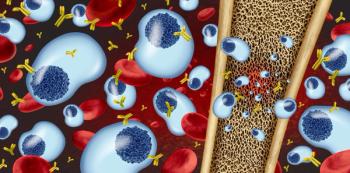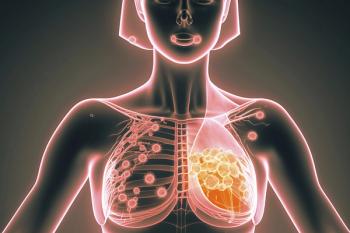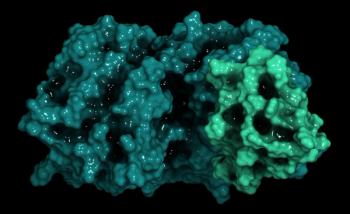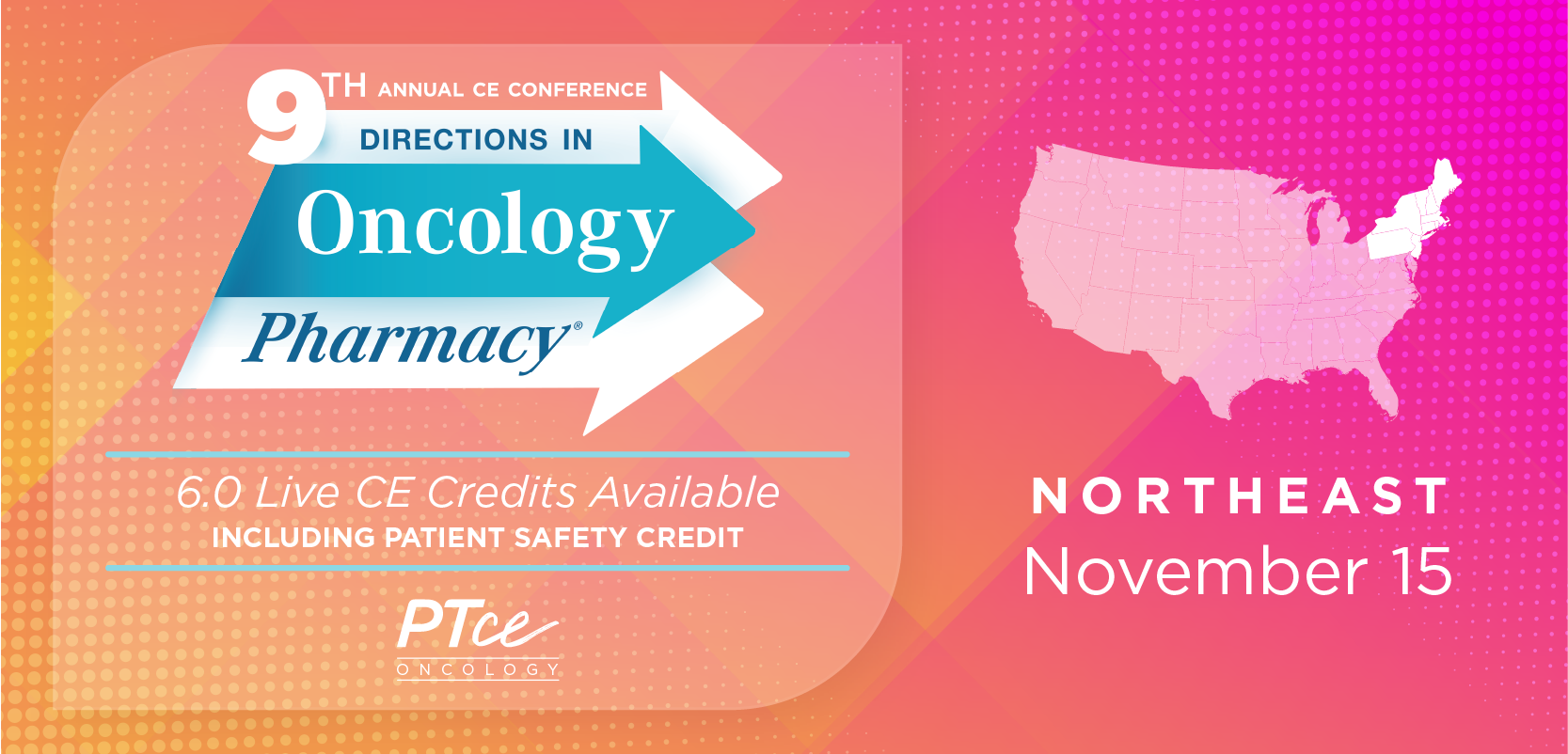
- September 2023 Immunization Guide for Pharmacists
Focus on Human Papillomavirus Virus Vaccination in Adults and Young Adults
Combining strong evidence-based recommendations with caring, compassionate, and frequent counseling opportunities hopefully will increase vaccine acceptance and ultimately reduce the incidence of HPV and associated cancers among our patients.
The human papillomavirus (HPV), a double-stranded DNA virus, is considered to be the most common pathogen related to sexually transmitted infection in the United States.1,2 Approximately 13 million persons are newly infected each year, adding to the estimated 42 million people currently infected.3 Infection with HPV, which can involve human epithelial cells, usually produces no symptoms and resolves spontaneously within a year or 2 of infection.2 In certain cases, however, HPV infection leads to cell differentiation, which can further develop into warts or various cancers. Over 100 HPV types have been molecularly characterized, and they are generally divided into2 clinical classifications: low risk and high risk. Low-risk HPVs are not carcinogenic, but they can generate anogenital warts. High-risk HPVs can lead to life-threatening malignancies including, but not limited to, cancers of the anus, cervix, penis, vagina, and mouth and throat (oropharynx).1 Associated risk factors for HPV infection include increased age difference between a woman and her first sexual partner, number of sexual partners, and nonmonogamous partners.2
Vaccines are available to prevent certain types of HPV infection. To date, 3 vaccines have been approved by the FDA: a bivalent HPV vaccine (2vHPV), a quadrivalent HPV vaccine (4vHPV), and a 9-valent HPV vaccine (9vHPV) (Figure).4 Although the 2vHPV and 4vHPV are licensed in the United States, they are no longer distributed. The 9vHPV vaccine (Gardasil 9; Merck Sharp & Dohme) was granted initial FDA approval in 2014, and it is currently the only HPV vaccine distributed in the United States.5
Safety and Efficacy of HPV Vaccines
HPV vaccine safety and efficacy was demonstrated in the results of several long-term studies in men and women.6-9 The most common adverse events (AEs) associated with the HPV vaccine are pain, swelling, or redness at the injection site; redness and swelling can increase with subsequent HPV vaccine doses.10 Other AEs include fever, headache, nausea, and muscle and joint pain.10,11 Syncope and dizziness have also been reported.10-12 In regard to serious AEs, few have been reported via the Vaccine Safety Datalink, which examined 2 years of 9vHPV data, or through the Vaccine Adverse Event Reporting System (VAERS).11,12
According to the results of studies examining infection, cervical epithelial neoplasia, and adenocarcinoma in situ, HPV vaccines are over 99% effective when administered prior to exposure to specific strains of HPV covered by vaccination.13 An in-depth review of efficacy studies is located in the CDC’s Epidemiology and Prevention of Vaccine-Preventable Disease (“The Pink Book”).4
Current Recommendations for HPV Vaccination
The Advisory Committee on Immunization Practices (ACIP) currently recommends routine HPV vaccination for adolescents aged 11 or 12 years, although the series can be given in patients as young as 9 years.14 For those who were not routinely vaccinated, catch-up vaccination is recommended for people 13 to 26 years old.14,15 Shared clinical decision-making is recommended for nonvaccinated individuals who are aged 27 to 45 years and who may benefit if they are at risk of a new HPV infection or exposure.15 Patients should complete the vaccine series with the 9vHPV vaccine regardless if they received the 2vHPV or 4vHPV vaccine. Restarting the HPV vaccine series is not necessary in this situation.14
The ACIP recommendations for HPV vaccination do not vary based on a patient’s behavioral or medical risk factors for HPV infection or disease.14 HPV vaccination should be delayed in pregnant persons until after pregnancy. However, pregnancy testing is not required for HPV vaccination. HPV vaccine can be administered in patients who are breastfeeding or lactating.
The American Academy of Pediatrics (AAP), however, recommends that the HPV vaccination series first be administered to patients aged 9 to 12 years.16 The AAP has listed several reasons for this minor differentiation, noting that an earlier offering of the vaccine would increase flexibility for providers in addition to detaching discussions about vaccination from those of sexuality. This earlier recommendation may also relieve some of the vaccine hesitancy fatigue surrounding HPV vaccination recommendations and increase vaccine uptake. The American Cancer Society also recommends routine vaccination for males and females aged 9 to 12 years.17
A 2-dose HPV vaccination schedule is recommended for patients aged 9 to 14 years.14 The second dose should be administered 6 to 12 months following the first (minimum dosing interval, 5 months). A 3-dose HPV vaccination schedule is recommended for patients who receive their first dose on or after their 15th birthday or for those who are immunocompromised (eg, due to HIV infection, cancer, transplantation, autoimmune disease, or use of immunosuppressant medications). The second dose should be administered 1 to 2 months after the first dose, and the third dose should be given 6 months after the initial dose. The first and second dose should be given at least 4 weeks apart, with at least 12 weeks between the second and third doses and at least 5 months between the first and third doses. If an HPV vaccine dose is received within a shorter time frame, the dose should be given again after another minimum interval has passed since the most recent dose. For both the 2- and 3-dose series, doses do not need to be restarted if the elapsed time is more than the recommended minimum interval.
The World Health Organization’s (WHO) guidelines, however, differ from those of the CDC. The difference lies mainly in the recommended dosages. The WHO updated their recommendations in December 2022 to a 1- or 2-dose schedule compared with the 2- or 3-dose series recommended by the CDC.14,18 In the CVT trial (NCT00128661), women who only received 1 dose showed lower antibody titers than those noted in studies of women given a 2- or 3-dose series.19 However, results of another clinical study (NCT00923702) revealed that at a 10-year follow-up, protective antibody levels were found in patients given a single dose of vaccine.20 Additionally, the 1-dose schedule may increase access to the vaccine and provide similar efficacy; therefore, it is considered to be an alternative, off-label single-dose schedule.18,20
Counseling Tips for Adults
HPV vaccination is recommended for persons 26 years or younger, and a shared clinical decision-making recommendation exists for persons aged 27 to 45 years who have not yet received the immunization.14,15 Clinical decision-making should be shared by the provider and the patient to determine the best outcomes that align with the patient’s needs and wants. Discussion of the benefits and risks for patients who fall into the shared clinical decision-making category can help ensure the availability and administration of appropriate vaccinations. Counseling should cover the safety and efficacy of the vaccine. Patient concerns regarding safety can be delineated broadly into the physical act of receiving a vaccine and the potential concerns related to its contents (eg, acute or chronic effects on the body). Physicians can cite data from the CDC’s VAERS, which indicate that the HPV vaccination series does not produce AEs at a rate higher than expected.21 Syncope following vaccination is not unusual; to avoid harmful falls, patients should be seated during vaccination and then observed for at least 15 minutes after the vaccine is given.22
Counseling Tips for Adolescents
The previously mentioned safety concerns also apply to adolescents; however, syncope occurs more frequently in adolescents following vaccinations.21 Additional counseling may be necessary as parental concerns regarding HPV vaccinations can differ from those of adults making health care decisions for themselves. Results from a cross-sectional study by Sonawane et al identified a nearly 2-fold increase (13.0% to 23.4%) in US parents declining HPV vaccination for their child from 2015 to 2018, respectively, because of safety concerns.23 Aside from safety, parents have cited a child’s lack of sexual activity as a reason for declining vaccination; however, the rate of HPV vaccine refusal for thisreason decreased over time in 2 studies.23,24 Counseling should focus on the prevention of future disease; it should not be perceived as a reflection of the person receiving the immunization.
Researchers and health care professionals believe that the decline in parental acceptance of the HPV vaccine is partially attributable to misinformation on social media (eg, HPV vaccines leading to infertility or autoimmune disorders).25 Negative media coverage, frequent changes in treatment recommendations, and the stigma surrounding HPV vaccination are also believed to contribute to lower-than-anticipated acceptance by the public.26,27
Despite these concerns, a strong recommendation from a health care provider is associated with greater vaccine acceptance.26 Therefore, counseling provided to patients by health care practitioners regarding the vaccine’s efficacy and safety is important to ensure protection against HPV infection.
Conclusions
The Healthy People 2030 initiative has a target goal of 80% of adolescents having received the recommended doses of the HPV vaccine.28 Data from this initiative indicate that as of 2021, approximately 58.5% of adolescents received the recommended doses of the HPV vaccine. The American College of Obstetricians and Gynecologists noted that the vaccination rates for HPV in the United States are unacceptably low compared with those of other countries, and the burden of disease could be drastically prevented with vaccination.29 Further, for each year that HPV vaccination rates do not increase, an additional 4400 women may develop cervical cancer.
The importance of being nonjudgmental when offering vaccination and providing disease state prevention counseling is paramount. Additionally, strong practitioner recommendations and increasing counseling opportunities are 2 strategies to increase HPV vaccination rates.30,31 Pharmacists are uniquely positioned to offer vaccine-related services and counseling among persons aged 18 to 26 years who can receive the catch-up regimen of 3 doses of 9vHPV. For example, HPV infection is believed to cause 70% of oropharyngeal cancers; even though men are at least 4 times more likely than women to develop oropharyngeal cancer due to HPV infection, a 20-year-old man may not be an obvious target for this recommendation by a pharmacist.4,32 Current guidelines reflect an effort to capture individuals who may have missed vaccination when first eligible.
Pharmacists are very accessible to patients and well-trained in discussing scientific subjects and sharing information with all adults, regardless of gender. Combining strong evidence-based recommendations with caring, compassionate, and frequent counseling opportunities hopefully will increase vaccine acceptance and ultimately reduce the incidence of HPV and associated cancers among our patients.
About the Authors
Jessica Huston, PharmD, is a clinical assistant professor in the Department of Pharmacotherapy and Translational Research in the College of Pharmacy at the University of Florida in Jacksonville.
Eric F. Egelund, PharmD, PhD, is a clinical assistant professor in the Department of Pharmacotherapy and Translational Research in the College of Pharmacy at the University of Florida in Jacksonville. You can find him on X (formerly Twitter) @labskills
References
- Genital HPV infection - basic fact sheet. CDC. Reviewed April 12, 2022. Accessed July 1, 2023. https://www.cdc.gov/std/hpv/stdfact-hpv.htm
- Chelimo C, Wouldes TA, Cameron LD, Elwood JM. Risk factors for and prevention of human papillomaviruses (HPV), genital warts and cervical cancer. J Infect. 2013;66(3):207-217. doi:10.1016/j.jinf.2012.10.024
- Lewis RM, Laprise JF, Gargano JW, et al. Estimated prevalence and incidence of disease-associated human papillomavirus types among 15- to 59-year-olds in the United States. Sex Transm Dis. 2021;48(4):273-277. doi:10.1097/OLQ.0000000000001356
- Meites E, Gee J, Unger E, Markowitz L. Human papillomavirus. In: Hall E, Wodi AP, Hamborsky J, Morelli V, Schillie S, eds. Epidemiology and Prevention of Vaccine-Preventable Diseases. 14th ed. Public Health Foundation, 2021.
- Gardasil 9. Prescribing information. Merck Sharp & Dohme; 2023. Accessed July 20,2023. https://www.merck.com/product/usa/pi_circulars/g/gardasil_9/gardasil_9_pi.pdf
- Castellsagu. X, Mu.oz N, Pitisuttithum P, et al. End-of-study safety, immunogenicity, and efficacy of quadrivalent HPV (types 6, 11, 16, 18) recombinant vaccine in adult women 24-45 years of age. Br J Cancer. 2011;105(1):28-37. doi:10.1038/bjc.2011.185
- Goldstone SE, Giuliano AR, Palefsky JM, et al. Efficacy, immunogenicity, and safety of a quadrivalent HPV vaccine in men: results of an open-label, long-term extension of a randomised, placebo-controlled, phase 3 trial. Lancet Infect Dis. 2022;22(3):413-425. doi:10.1016/S1473-3099(21)00327-3
- Luna J, Plata M, Gonzalez M, et al. Long-term follow-up observation of the safety, immunogenicity, and effectiveness of Gardasil in adult women. PLoS One. 2013;8(12):e83431. doi:10.1371/journal.pone.0083431
- FUTURE I/II Study Group; Dillner J, Kjaer SK, Wheeler CM, et al. Four year efficacy of prophylactic human papillomavirus quadrivalent vaccine against low grade cervical, vulvar, and vaginal intraepithelial neoplasia and anogenital warts: randomised controlled trial. BMJ. 2010;341:c3493. doi:10.1136/bmj.c3493
- Vaccine safety: human papilloma virus. CDC. Reviewed September 9, 2020. Accessed July 3, 2023. https://www.cdc.gov/vaccinesafety/vaccines/hpv-vaccine.html
- Shimabukuro TT, Su JR, Marquez PL, Mba-Jonas A, Arana JE, Cano MV. Safety of the 9-valent human papillomavirus vaccine. Pediatrics. 2019;144(6):e20191791. doi:10.1542/peds.2019-1791
- Donahue JG, Kieke BA, Lewis EM, et al. Near real-time surveillance to assess the safety of the 9-valent human papillomavirus vaccine. Pediatrics. 2019;144(6):e20191808. doi:10.1542/peds.2019-1808
- Vaccines and preventable diseases: about HPV vaccines. CDC. Reviewed November 16, 2021. Accessed July 1, 2023. https://www.cdc.gov/vaccines/vpd/hpv/hcp/vaccines.html
- Human papillomavirus (HPV): HPV vaccine schedule and dosing. CDC. Reviewed November 1, 2021. Accessed July 21, 2023. https://www.cdc.gov/hpv/hcp/schedules-recommendations.html
- Meites E, Szilagyi PG, Chesson HW, Unger ER, Romero JR, Markowitz LE. Human papillomavirus vaccination for adults: Reviewed recommendations of the Advisory Committee on Immunization Practices. MMWR Morb Mortal Wkly Rep. 2019;68:609-702. doi:10.15585/mmwr.mm6832a3
- O’Leary ST. Why the American Academy of Pediatrics recommends initiating HPV vaccine at age 9. Hum Vaccin Immunother. 2022;18(6):2146434. doi:10.1080/21645515.2022.2146434
- Guidelines for human papillomavirus (HPV) vaccine use. American Cancer Society. Accessed July 3, 2023. https://www.cancer.org/health-care-professionals/american-cancer-society-prevention-early-detection-guidelines/hpv-guidelines.html
- Human papillomavirus vaccines: WHO position paper, December 2022. Weekly Epidemiological Record. 2022;97(50):645-672. WHO. Accessed July 31, 2023. https://www.who.int/publications/i/item/who-wer9750-645-672
- Kreimer AR, Sampson JN, Porras C, et al. Evaluation of durability of a single dose of the bivalent HPV vaccine: the CVT trial. J Natl Cancer Inst. 2020;112(10):1038-1046. doi:10.1093/jnci/djaa011
- Joshi S, Anantharaman D, Muwonge R, et al. Evaluation of immune response to single dose of quadrivalent HPV vaccine at 10-year post-vaccination. Vaccine. 2023;41(1):236-245. doi:10.1016/j.vaccine.2022.11.044
- Human papillomavirus (HPV): HPV vaccine safety and effectiveness data. CDC. Reviewed November 1, 2021. Accessed July 22, 2023. https://www.cdc.gov/hpv/hcp/vaccine-safety-data.html
- Vaccine safety: fainting (syncope) after vaccination. CDC. August 25, 2020. Accessed July 31, 2023. https://www.cdc.gov/vaccinesafety/concerns/fainting.html
- Sonawane K, Zhu Y, Lin YY, et al. HPV vaccine recommendations and parental intent. Pediatrics. 2021;147(3):e2020026286. doi:10.1542/peds.2020-026286
- Beavis A, Krakow M, Levinson K, Rositch AF. Reasons for lack of HPV vaccine initiation in NIS-Teen over time: shifting the focus from gender and sexuality to necessity and safety. J Adolesc Health. 2018;63(5):652-656. doi:10.1016/j.jadohealth.2018.06.024
- Jaber N. Despite proven safety of HPV vaccines, more parents haveconcerns. National Cancer Institute. October 22, 2021. Accessed July 4, 2023. https://www.cancer.gov/news-events/cancer-currents-blog/2021/hpv-vaccine-parents-safety-concerns
- Morales-Campos DY, Zimet GD, Kahn JA. Human papillomavirus vaccine hesitancy in the United States. Pediatr Clin North Am. 2023;70(2):211-226. doi:10.1016/j.pcl.2022.11.002
- Updyke EA, Welsh E. Episode 67 HPV: my wart be with you. This Podcast Will Kill You. February 23, 2021. Accessed June 27, 2023. https://thispodcastwillkillyou.com/2021/02/23/episode-67-hpv-my-wart-be-with-you/
- Increase the proportion of adolescents who get recommended doses of the HPV vaccine — IID08. Healthy People 2030. Accessed July 4, 2023. https://health.gov/healthypeople/objectives-and-data/browse-objectives/vaccination/increase-proportion-adolescents-who-get-recommendeddoses-hpv-vaccine-iid-08
- Human papillomavirus vaccination. American College of Obstetricians and Gynecologists. July 23, 2020. Accessed July 3, 2023. https://www.acog.org/clinical/clinical-guidance/committee-opinion/articles/2020/08/human-papillomavirus-vaccination
- Holloway GL. Effective HPV vaccination strategies: what does the evidence say? An integrated literature review. J Pediatr Nurs. 2019;44:31-41. doi:10.1016/j.pedn.2018.10.006
- Evidence-Based Cancer Control Programs (EBCCP): HPV vaccination evidence-based programs listing. National Cancer Institute. Accessed July 4, 2023. https://ebccp.cancercontrol.cancer.gov/topicPrograms.do?topicId=22626661
- Moriarty C. Throat cancers are on the rise: why this matters to you. Yale Medicine. March 5, 2020. Accessed July 24, 2023. https://www.yalemedicine.org/news/throat-cancers-on-the-rise
Articles in this issue
Newsletter
Stay informed on drug updates, treatment guidelines, and pharmacy practice trends—subscribe to Pharmacy Times for weekly clinical insights.





















































































































































































































